You know its franks, but what about its bar? Coney Island's forgotten cocktail history
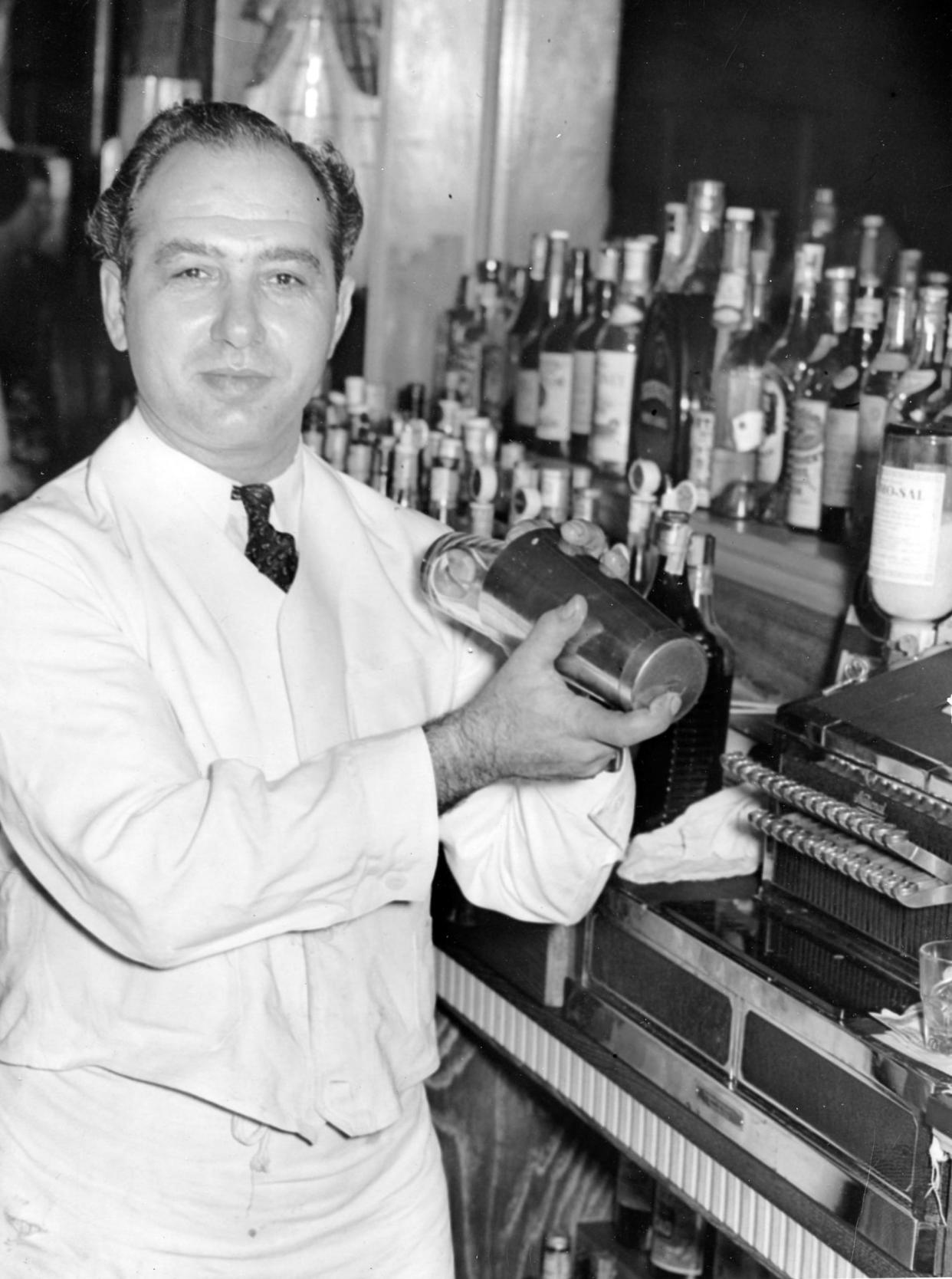
Legend tells of a time when George’s Coney Island saw its busiest hours late in the night.
The Coney Island of the 1930s and '40s stayed open as late as 2 or 3 in the morning. And lines of people queued up on Southbridge Street after a Friday night filled with dancing to luxuriate in its “modern tap room,” sipping on martinis and gin fizzes.
The towering neon sign for Coney Island shines like a beacon of sustenance — grilled to perfection and tucked into a steamed bun.
Of course, everyone knows the hand gripping the gigantic frankfurter, but just below the dripping mustard another, often-overlooked portion of the sign reads, “BAR.”
Coney Island’s story has been told again and again, and yet at least one cocktail onion-sized part of that over century-long history remains fuzzy: Not long after the end of Prohibition, Coney Island played host to a vivacious nightlife, with a well-stocked bar regularly serving up everything from Manhattans to Singapore slings.
Few close to Coney Island remember these days, and while its bar remains open, it no longer offers the extensive cocktail and mixed drink list that it did for at least a decade, likely even through World War II.
“As long as I’ve been around, we’ve never done much with the bar,” said Kathryn Tsandikos, whose grandfather, George Tsagarelis, purchased the property that would become Coney Island around 1928. “It’s always been a bottle of beer to complement the hot dogs.”
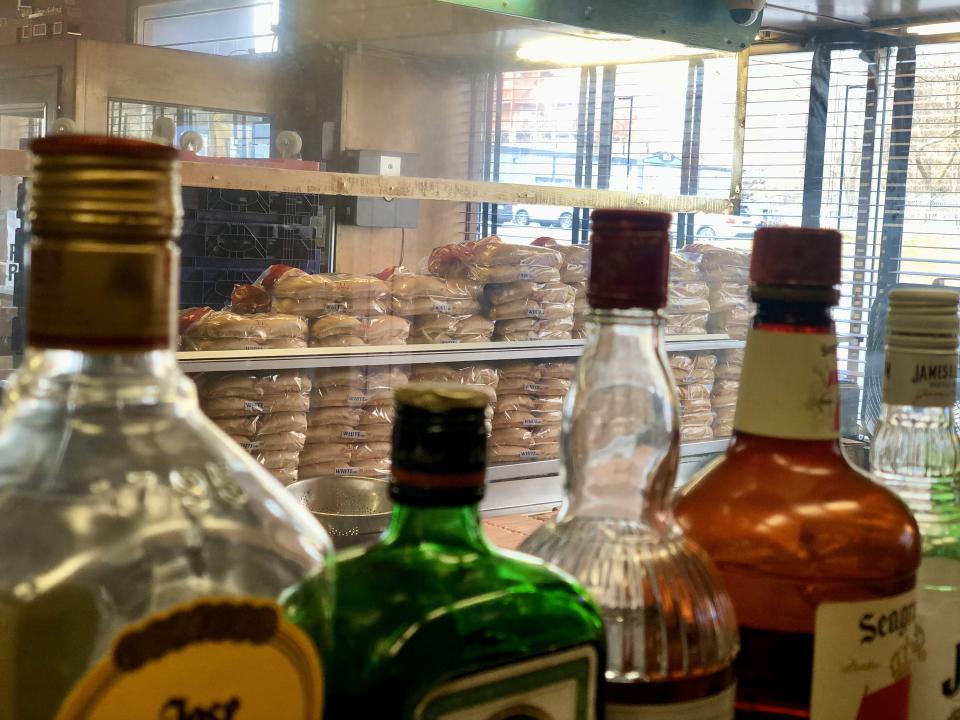
The cocktail menu
Coney Island’s drink menu once had far more to imbibe than simply bottled or draft beer.
For a glimpse into this nearly-forgotten time in Coney Island’s past, Tsandikos has kept a weathered menu from those boozier days, complete with her grandmother’s notes on price changes, such as the George’s Special — a mix of lemon juice, Grenadine, Old Mr. Boston Dry Gin and rum — going up five cents.
The myriad options for cocktails, mixed drinks, fizzes, whiskeys and other spirits takes up two pages. The food menu on the back, on the other hand, covers just one.
Diners could order more than frankfurters to soak up their liquor. They likely paired their Rob Roy (scotch, vermouth, bitters), Side Car (brandy, Cointreau, lime), or Mint Julep (mint, bourbon, brandy sugar, fruit) with a wide variety of sandwiches.
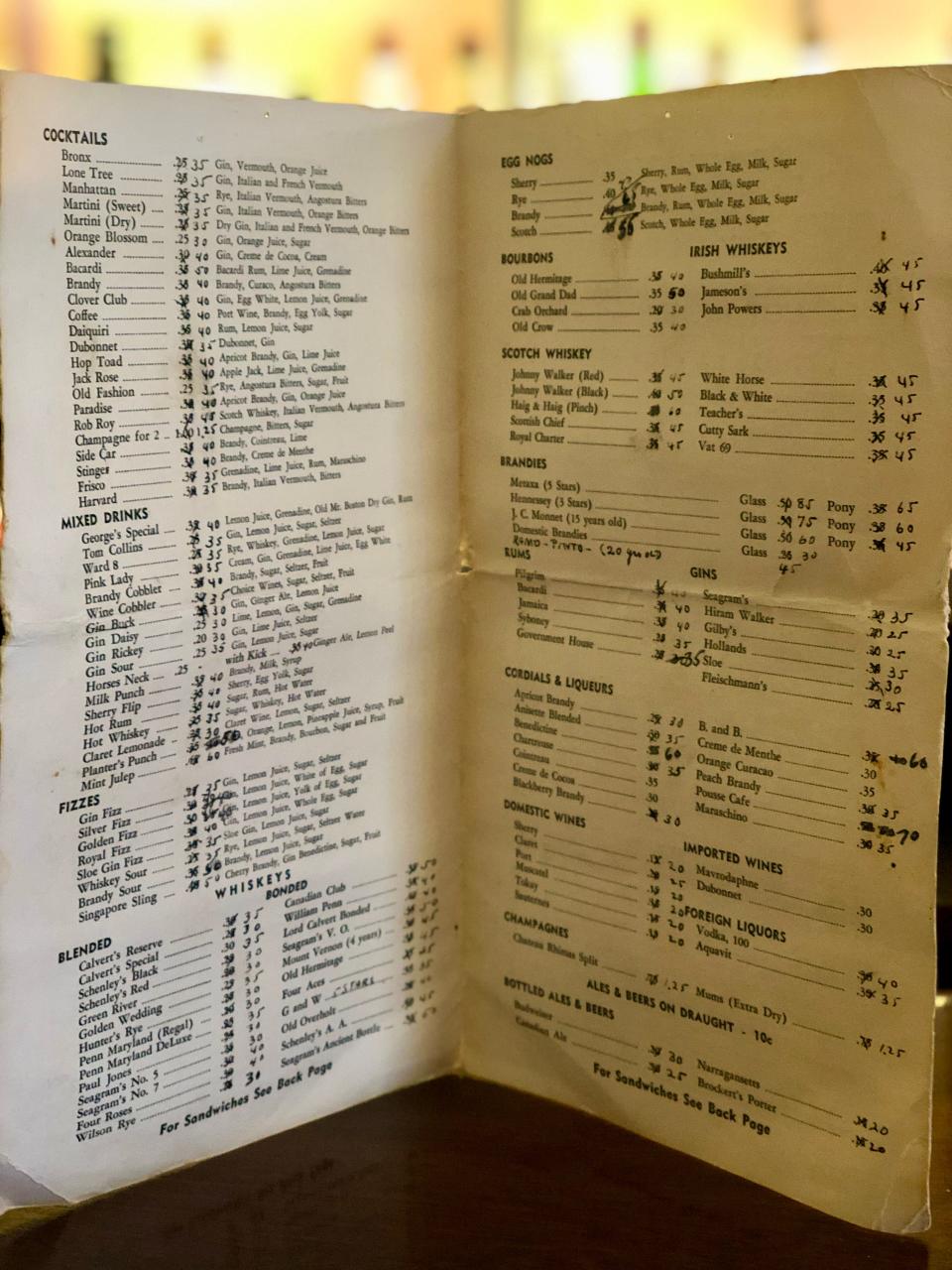
I wonder how a Clover Club (gin, egg white, lemon juice, Grenadine) tasted with the chicken chop suey sandwich. I wager the sardine sandwich went well with the dry martini (gin, Italian and French vermouth, orange bitters).
Curious what today’s local bartenders would think of Coney’s cocktails, I emailed a picture of the menu to Frank and Mara Inangelo, the owners of Steel & Wire Cocktail Lounge on Millbury Street. Their first thought was to marvel at how expansive the offerings were.
“Today you rarely find a drink menu with this many options,” Frank Inangelo said in an email. “You can also see how consumer tastes have changed — there are multiple options for whiskey, Scotch and bourbon while there is one lonely vodka listed under ‘foreign spirits.’ Today vodka is by far the top selling liquor in the US, followed by Tequilas and Mezcals, which aren't even on this menu.”
The prices struck the Inangelos as odd by today’s standards, such as a Budweiser, at 20 cents, costing a mere five cents less than an Old Fashioned (rye, Angostura bitters, sugar, fruit).
“In 2024, if you went to a bar or restaurant and the cocktail was the same price as a domestic beer you'd scratch your head,” Inangelo said. “The cost of spirits must have been much lower at the time, on par with beer.”
They picked out the “George’s Special” — a cocktail that Coney Island recreated last year during a collaboration with MamaRoux — as an example of a standard cocktail that deviated slightly from the original.
The cocktail mirrors a Bacardi Special (rum, gin, grenadine, lime juice) but substitutes lemon juice.
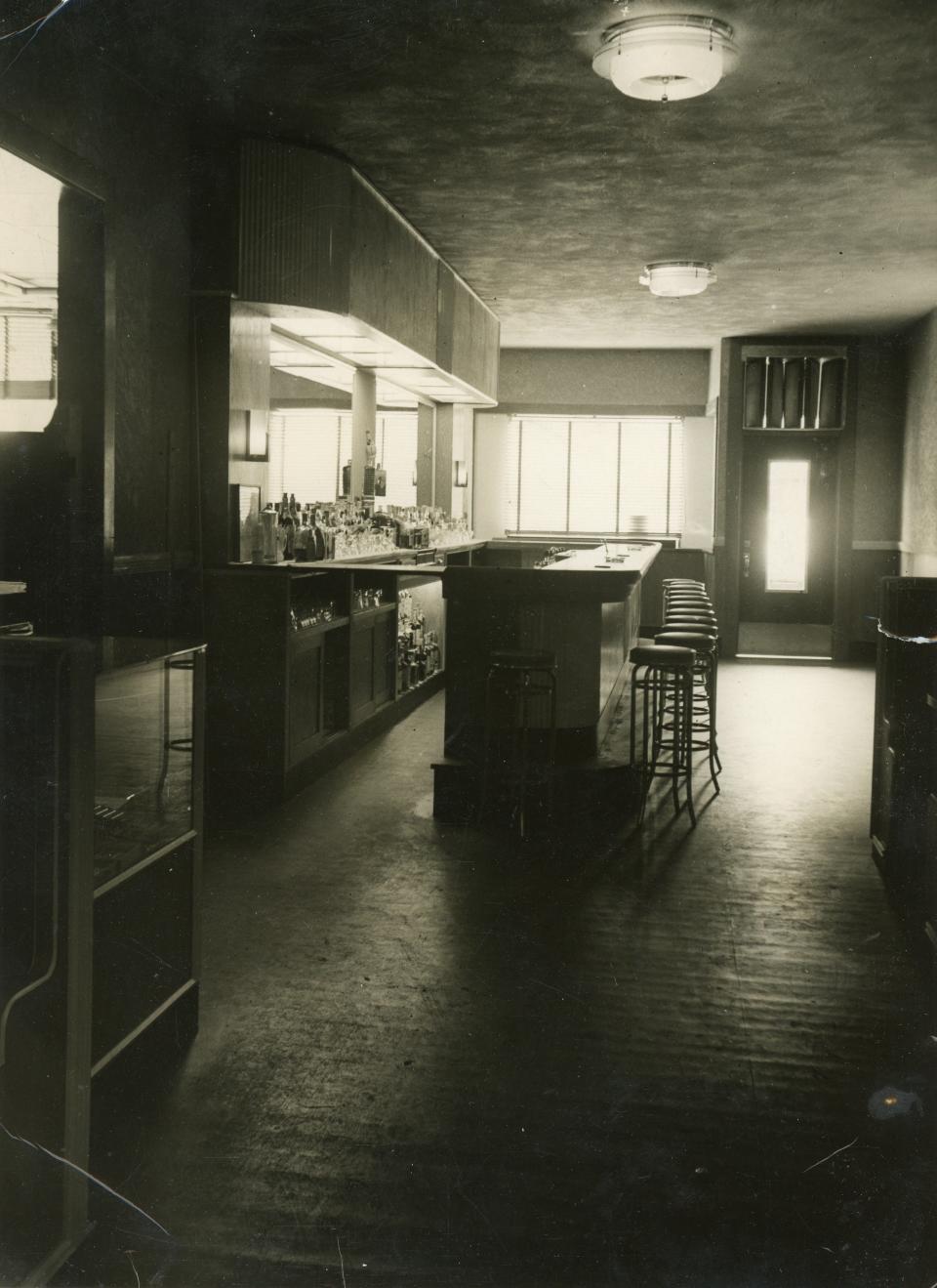
A different Coney Island
The dizzying array of drink options makes you wonder what kind of vibe this Coney Island cultivated. Was it still just a casual, quick dining spot, or did it cater to a posher crowd, dressed to the nines, partying all night in the barroom below those elegant portraits of different dances.
“I don’t think it was ever posh,” Tsandikos told me. Certainly, she said, this Coney Island acted more as a full-service restaurant that, unlike today, got busier at night.
The neighborhood, she said, would have demanded such a Coney Island. Pictures from the time show a more active Southbridge Street, with apartments and factories and stores all around.
“It’s not like you see it now,” she said. “This area was booming.”
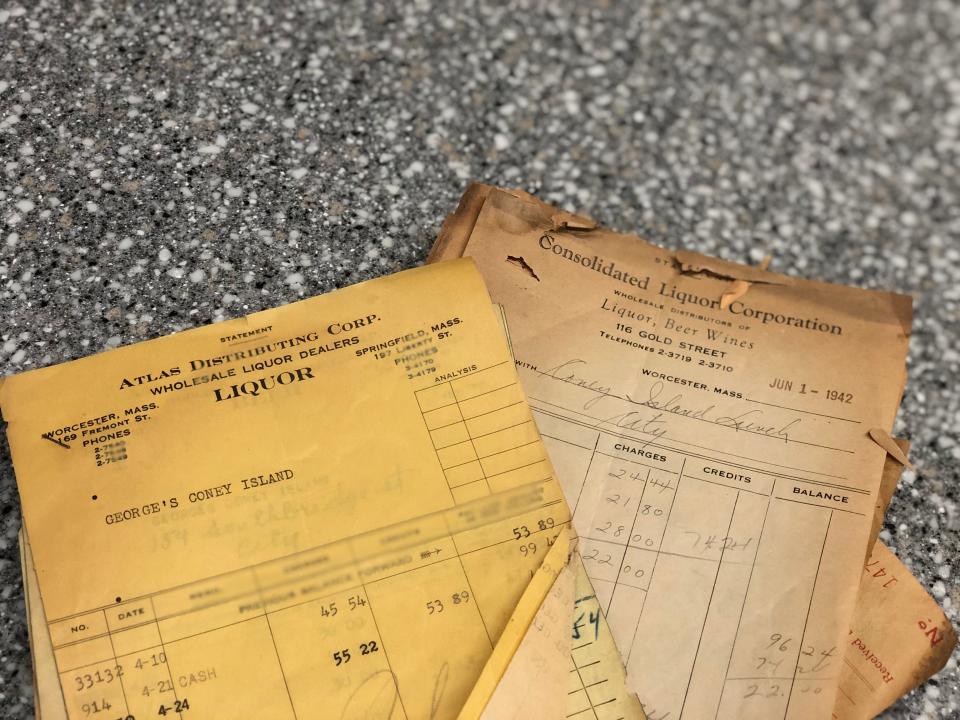
Tsandikos pieces together these times mostly through pictures, as they predate her. She mostly remembers Coney Island’s bar in the '60s, when Wyman-Gordon workers would pack it after their shifts to order a shot and a beer.
“There’s different pieces of history, and there’s nobody left to tell us anything,” she said.
The pictures answer some questions about Coney Island’s bar, like who might have been tending it. Tsandikos pointed me to one undated photograph of her grandfather, George Tsagarelis, holding a cocktail shaker, wearing a white vest over a dress shirt and tie.
We also know the bar was better stocked than it is now, through another undated photo, shared by the Worcester Historical Museum, showing the back filled with different spirits and glassware.
Tsandikos’ grandmother, Catherine Tsagarelis, kept boxes of old alcohol delivery invoices, too.
I got to look at a box of the invoices from the '40s. The thick piles of tattered sheets, from the likes of Atlas Distributing Corp. and Consolidated Liquor Corporation, indicate Coney Island ordered much more booze during that time than today.
Then there are the legends, Tsandikos said.
During World War II, the train station across the street from Coney Island would ferry soldiers back and forth from Fort Devens. They’d come to Worcester on a Friday or Saturday to dance the night away, she said. Before leaving, they would stop at Coney Island for food and drinks.
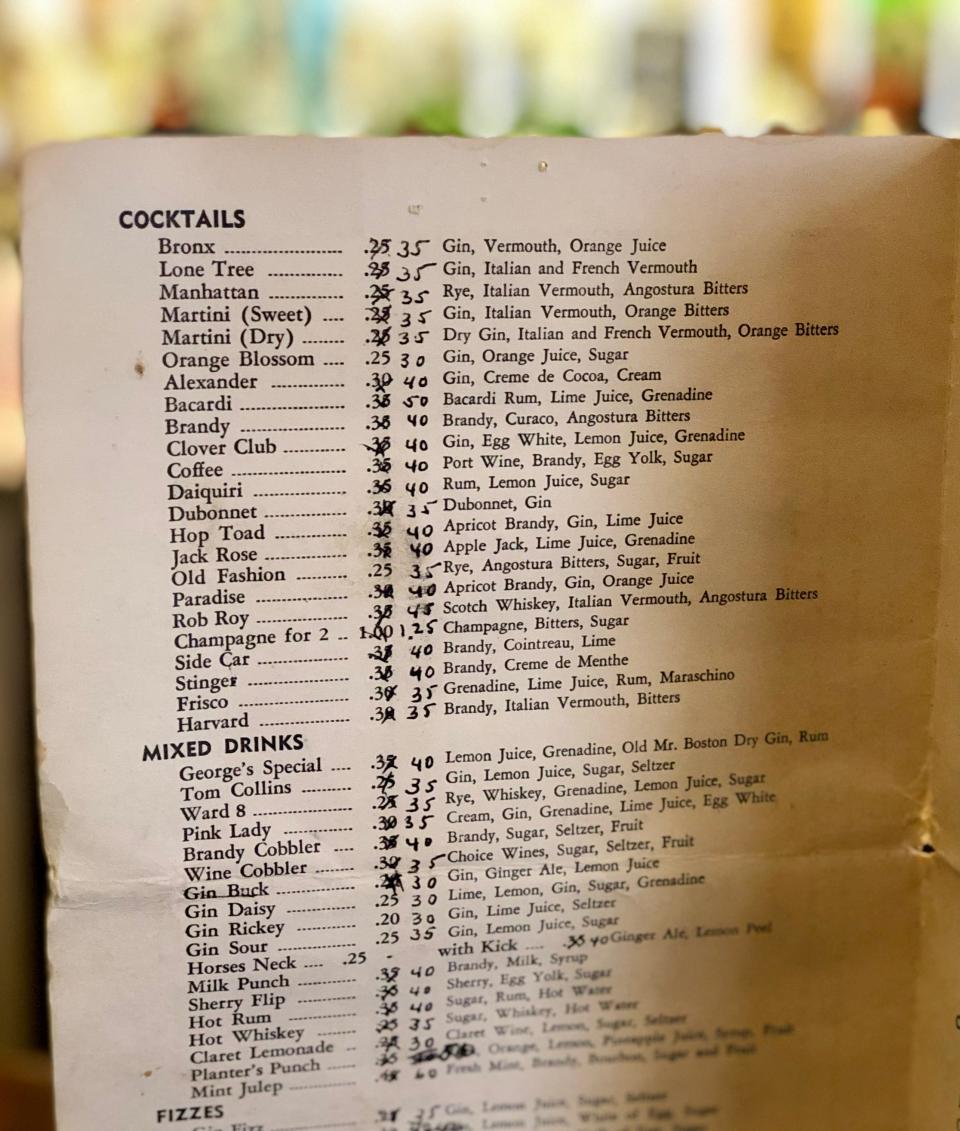
“Worcester was this hotspot,” she said, with Coney Island’s bar likely in the middle of it.
Tsandikos has no plans to re-energize the bar and bring back its cocktail menu herself. Solon Kelleher, Tsandikos’ son, has taken an interest in the relic of a menu, though, and hopes to work more of those drinks into its current bar.
And both would welcome in local bartenders for special events and pop-ups.
“I think that would be fun,” she said. “We all support and work together and foster each other’s creativity.”
This article originally appeared on Telegram & Gazette: Looking back at a nearly-forgotten piece of Coney Island’s history

